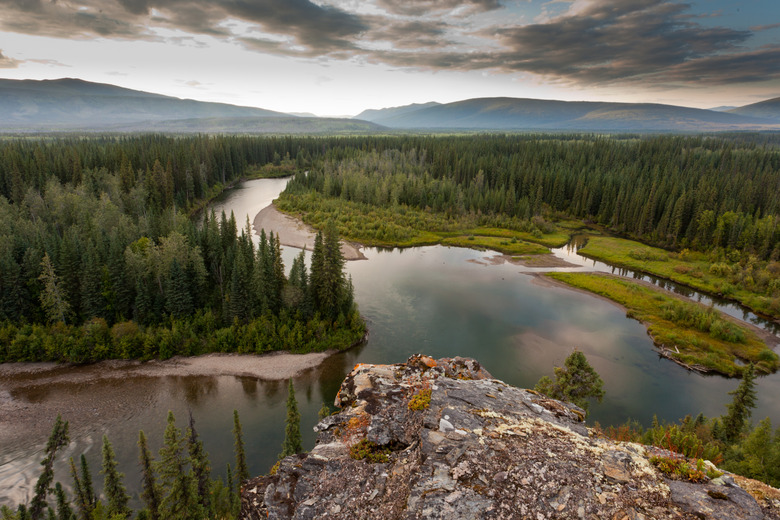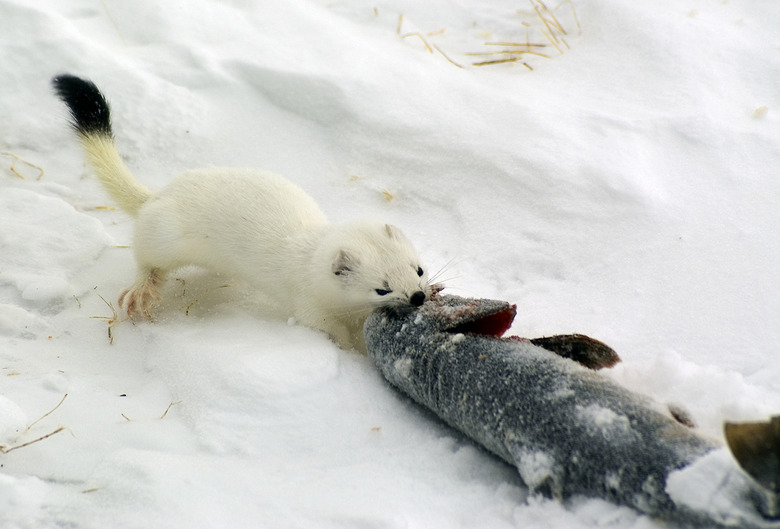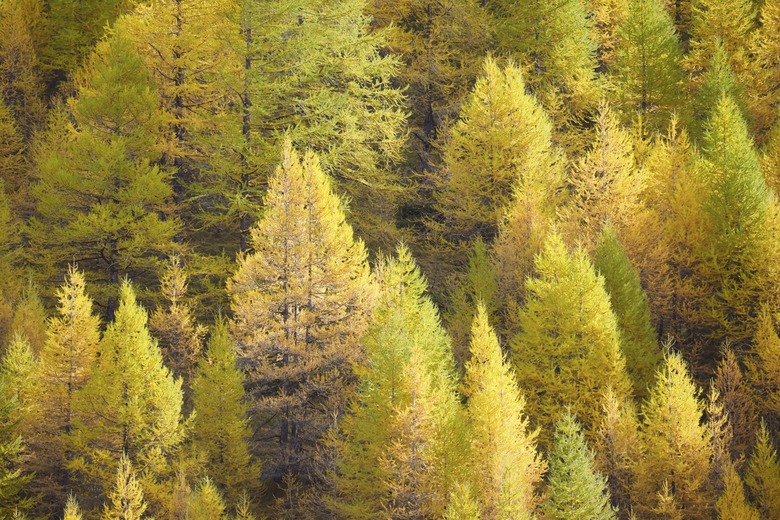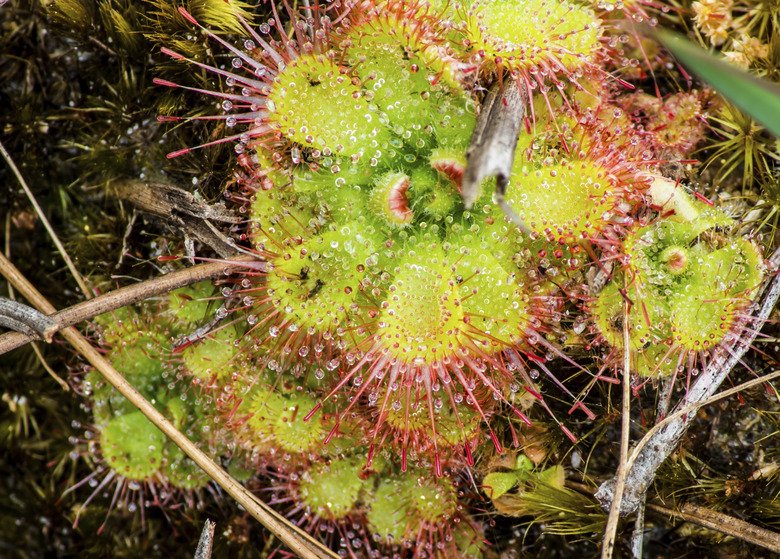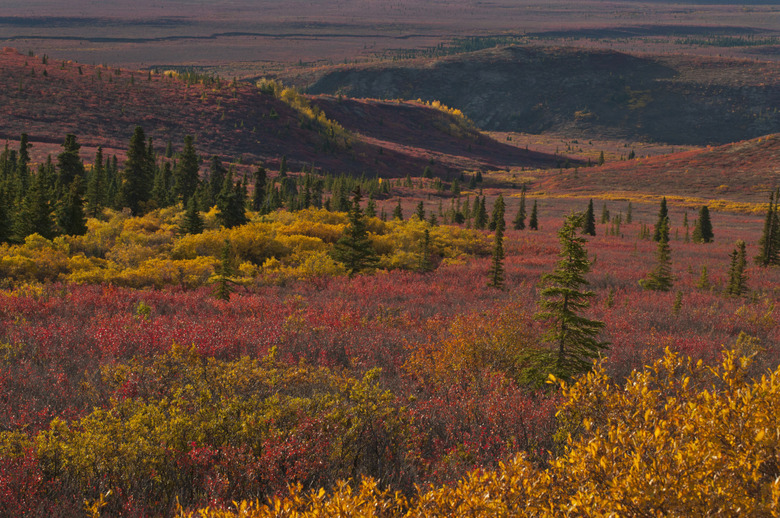Taiga Fun Facts
More space is covered by the taiga, also called the boreal forest, than by any other land biome on Earth, one of many surprising taiga biome facts. The taiga's cold, wet, forested environment covers much of Russia and Canada, as well as Scandinavia and southern Alaska. Because of the taiga's characteristic harsh climate, its plants and animals have evolved many specific traits to survive.
Winter Camouflage
Winter Camouflage
**The environment of the taiga is strikingly different between the summer and winter months.** In the summer, the taiga may be wet and boglike, while in the winter large quantities of snow cover the ground. Some mammals have evolved separate coats of fur so they can be camouflaged in both seasons. For instance, the ermine, a close relative of the weasel, is a small predator that eats rodents, birds and insects. In the summer, the ermine's fur is a reddish-brown that matches the dead plant matter of the forest floor. However, in winter the ermine's coat grows out entirely white, except for a black tuft on its tail. The ermine's white winter coat lets it blend in with the snow and stalk its prey unseen.
The Larch Tree
The Larch Tree
Most trees in the taiga are conifers, specially adapted to the cold conditions of the biome. **Conifers, such as pines, firs and spruces, have needles instead of leaves, grow seeds in cones and are evergreens, meaning they do not shed their needles in the winter. This trait allows evergreens to save energy by not regrowing their needles during the spring. However, the larch tree, which grows throughout the Canadian and Russian taiga, is deciduous*. Unlike other conifers, it sheds its needles during the winter. During autumn, the larch's needles turn yellow or orange as the leaves of nonconiferous trees do.
Carnivorous Plants
Carnivorous Plants
The decaying needles of coniferous trees make the soil in the taiga acidic and nitrogen poor. Because of this, **some taiga plants have evolved other ways of acquiring nitrogen.** Carnivorous plants trap and kill animals to gain nutrients. Pitcher plants, such as Sarracenia purpurea, grow funnel-shaped leaves filled with digestive juices; insects, spiders and small frogs fall into these leaves and cannot escape. Once the prey dies, the plant gathers nutrients from its decaying corpse. Sundew plants have round, sticky leaves. Insects get stuck to these leaves, which then fold up to trap them.
The Edge of Taiga and Tundra
The Edge of Taiga and Tundra
Despite the cold weather in the taiga, it is a damp and widely forested environment. **The only biome that lies farther north than the taiga is the tundra,** which is cold, dry, and treeless. One of the major differences between the taiga and tundra is permafrost. The soil under the tundra is frozen year-round, allowing only small plants to grow; tree roots cannot grow through permafrost. On the edge of the taiga and tundra, the forests of tall, straight conifers disappear. The few trees that do remain on the edge of the two biomes grow out at crooked angles from the ground, because their roots cannot provide enough support.
Cite This Article
MLA
Zamboni, Jon. "Taiga Fun Facts" sciencing.com, https://www.sciencing.com/taiga-fun-10009726/. 25 July 2018.
APA
Zamboni, Jon. (2018, July 25). Taiga Fun Facts. sciencing.com. Retrieved from https://www.sciencing.com/taiga-fun-10009726/
Chicago
Zamboni, Jon. Taiga Fun Facts last modified March 24, 2022. https://www.sciencing.com/taiga-fun-10009726/
